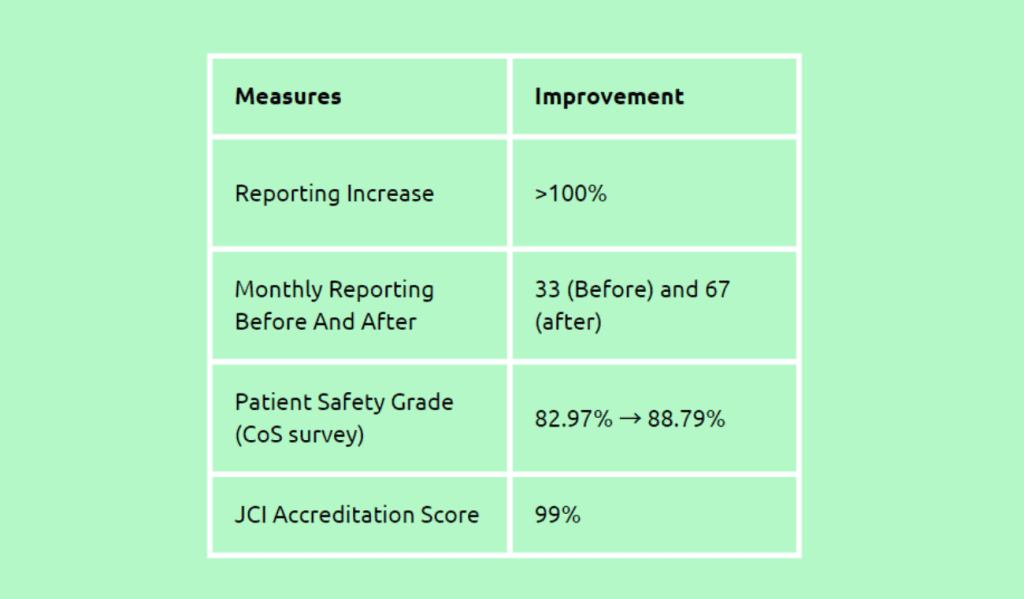Ventilator Pathway: Clinical Pathway As An Emerging Tool For Quality Improvement
Read the Magazine in PDF
Abstract:
This paper focuses on implementing a Ventilator Pathway at Sir H. N. Reliance Foundation Hospital, a leading healthcare facility in South Mumbai. The pathway aims to improve outcomes for mechanically ventilated patients by adhering to evidence-based practices and ensuring standardized care. A retrospective analysis of data from March to July 2021 revealed the need for standardized practice guidelines, as indicated by the ventilator-associated events (VAE) rates and their associated outcomes. To address this, the hospital embarked on a journey to establish a safety and quality improvement culture. Various strategies were implemented, including top management commitment, clear communication of safety culture values, user-friendly reporting mechanisms, quality circles, and reward and recognition programs. These efforts resulted in significant improvements, such as a notable increase in incident reporting, improved patient safety grades, and a high JCI accreditation score. The hospital’s commitment to maintaining and replicating these improvements is demonstrated through ongoing incident analysis, adherence to JCI standards, regular audits and drills, and participation in the culture of safety surveys.
Organization Profile
In South Mumbai, Sir H. N. Reliance Foundation Hospital is a state-of-the-art facility with 345 beds. Its primary goal is to provide high-quality medical services to individuals from all walks of life at an affordable cost. This is achieved through international evidence-based practices, a proficient team of experts, well-trained staff, and cutting-edge technology. The hospital holds prestigious accreditations from JCI (Joint International Commission) and NABH, which signify its commitment to delivering superior care and ensuring patient safety. Notably, it is also recognized as the largest Gold Certified Green Hospital in Mumbai, adhering to both national and international green building standards.
Introduction:
At RFH (Reliance Foundation Hospital), a Ventilator pathway was adopted to improve outcomes for mechanically ventilated patients. Adapting or developing clinical ways to effectively implement clinical practice guidelines is often necessary. These pathways are valuable tools for payers, promoting provider adherence to evidence-based care. By ensuring the appropriate sequencing, integration, coordination of care, and efficient use of resources, pathways contribute to delivering high-quality care. Adhering to pathway adherence thresholds incentivizes the provision of appropriate care, leading to standardized care and improved outcomes.
A retrospective analysis of data from March to July 2021 was conducted with the following outcomes:
- The analysis focused on ventilator-associated events (VAEs) and their rates.
- The VAE rate during this period was found to be 31 cases.
- Specifically, the VAC (Ventilator-Associated Condition) rate was 18 cases.
- The IVAC (Infection-related Ventilator-Associated Condition) rate was 8.8 cases.
- The PVAP (Possible Ventilator-Associated Pneumonia) rate was 13 cases.
- These patients’ average length of stay (ALOS) was 75 days.
- The mortality rate observed in these patients was 12.35%.
The lack of standardized practice guidelines may have contributed to these outcomes.
Creating a culture, whether a culture of safety or any other type, is not an instantaneous process. It requires cultivation and continuous effort. A culture of safety is characterized by shared beliefs and behaviours that prioritize learning from errors within an organization. However, when mistakes go unreported for various reasons, it becomes the initial failure to establish a safe culture.
In early 2018, the reported incidents ranged from 50 to 60. This indicated a reactive model of safety, where safety measures were taken only in response to incidents. Transitioning from reactive to proactive seemed like a long and challenging journey. To assess the presence of effective systems and processes for error prevention, the hospital’s CEO opted for a JCI (Joint International Commission) baseline survey. The survey scores obtained were less than 90%, which did not meet the required standard for passing. These scores signal the top management to adopt a Total Quality Management (TQM) approach to establish a safety culture. The following objectives were set:
- Top management commitment towards fostering a safe culture.
- Clear and visible communication of safety culture values throughout the organization.
- The organizational commitment of resources includes staff time, education, a secure reporting system for addressing safety concerns, and more.
- Empowering employees to report incidents without fear of reprisal.
The targets identified were as follows:
- Creation of a user-friendly anonymous incident reporting platform to encourage reporting.
- Increase in incident reports by more than 80%.
- Increment in the Patient Safety grade on the Culture of Safety score by a minimum of 5%.
- Achieve a JCI accreditation score of over 90%.
By implementing these measures, the aim was to develop a culture of safety where reporting incidents is encouraged, the organization actively works to improve patient safety, and the general safety practices meet or exceed the standards set by JCI accreditation.
1. Following were the options to find a solution to the problem:
- Top management commitment:
- Emphasizing patient safety during town hall meetings, core team meetings, and employee engagement sessions.
- Including incident reports and closures in weekly operations meetings to foster discussions.
- Establishing a facility safety group to address unsafe facility issues.
2. Communication of safety culture value:
- Communicating the importance of patient safety during town hall/core team meetings and employee engagement sessions.
- Incorporating sessions on the Culture of Safety (CoS) during induction programs and annual mandatory training sessions.
3. User-friendly reporting mechanism:
- Conducting force field analysis to identify factors inhibiting fear-free reporting.
- Developing digital tools such as editable PDFs, Incident Management systems, and mobile-based Quality Management System (QMS) applications.
4. Quality circle:
- Categorizing incidents based on responsible departments for Corrective and Preventive Actions (CAPA).
- Involving hospital governance committees in policy/process change decisions.
- Assigning department Heads of Departments (HODs) to conduct root cause analysis and implement CAPAs with support from Quality team experts.
5. Reward and recognition:
- Creating a Patient Safety Champion award to acknowledge individuals who contribute to patient safety.
6. Culture of safety survey:
- Encouraging participation in the Culture of Safety survey through top-down support and displaying QR codes across the organization.
- Analyzing survey findings and implementing innovative solutions to address the top 5 identified areas for improvement.
To make sure that all the improvements made are maintained and replicated,
- Weekly incident analysis summaries are provided, categorizing incidents by type, departments involved, and closure status.
- Monthly reports are submitted to governance committees to ensure incident management oversight and monitoring.
- Implementation of JCI standards to improve critical operational systems related to quality and patient safety
- Conducting annual mock audits, safety drills, and facility rounds to assess and enhance safety protocols.
- Administering the Agency for Healthcare Research and Quality (AHRQ) culture of safety survey every two years to gauge the organization’s safety culture.
This initiative was driven by the entire organization, demonstrating a collective commitment to improving patient safety and fostering a culture of continuous improvement.
Outcome :

Identification of system and people issues leading to the establishment of a Just culture:
- Leadership’s thought process has shifted towards a holistic direction, fostering cross-functional teamwork.
- Processes have been designed to prevent the failure of any safety event.
Conclusion :
Implementing the Ventilator Pathway at Sir H. N. Reliance Foundation Hospital has significantly improved patient safety and quality measures. The hospital has achieved commendable outcomes by establishing a safety culture and continuous improvement. The leadership’s commitment and proactive approach to addressing system and people issues have fostered a holistic thought process and cross-functional teamwork. The hospital’s focus on preventive strategies and standardized care has enhanced patient outcomes and reduced ventilator-associated events. These achievements highlight the effectiveness of clinical pathways as a tool for quality improvement. The ongoing commitment to maintaining and replicating these improvements ensures that patient safety remains a top priority at Sir H. N. Reliance Foundation Hospital.




